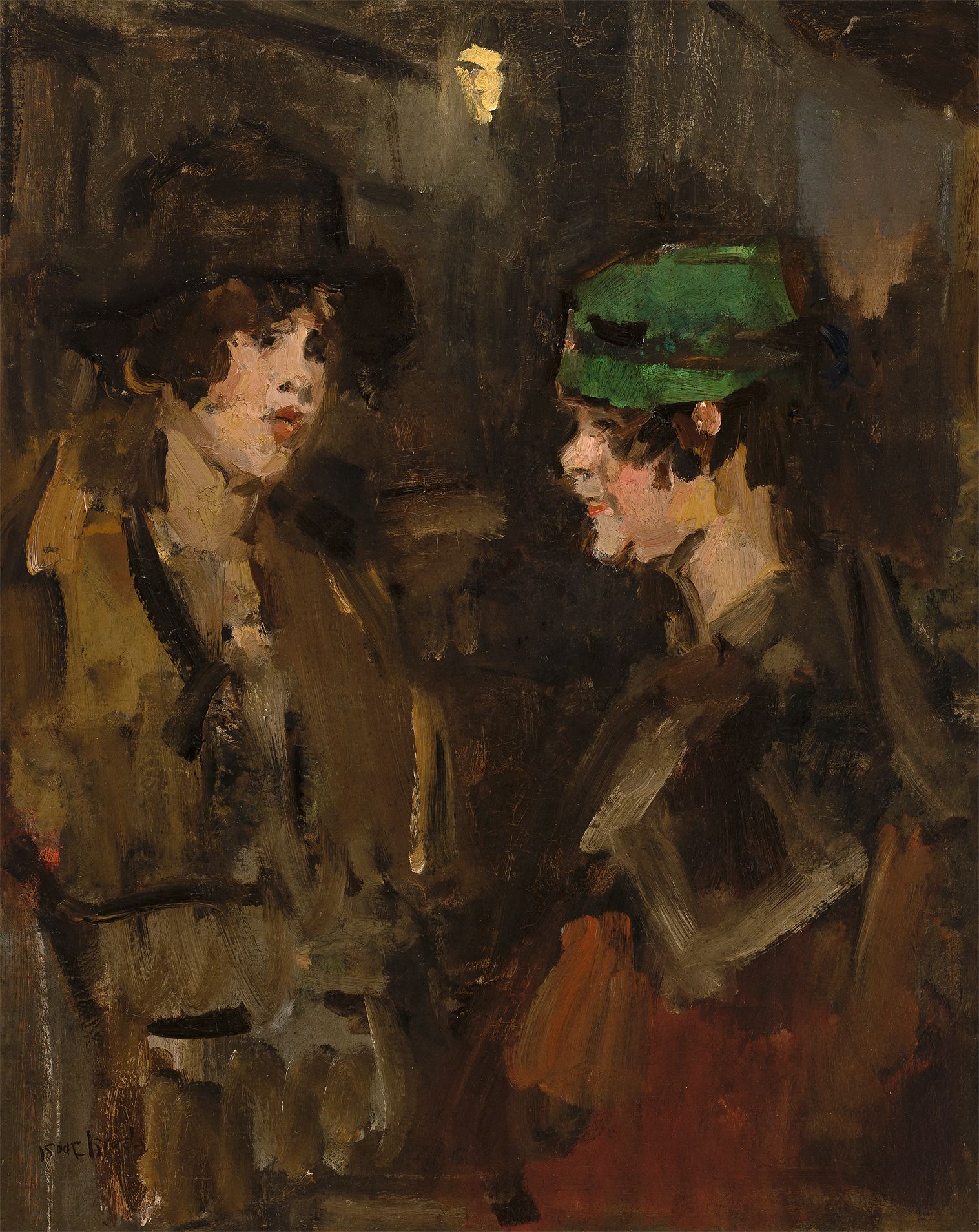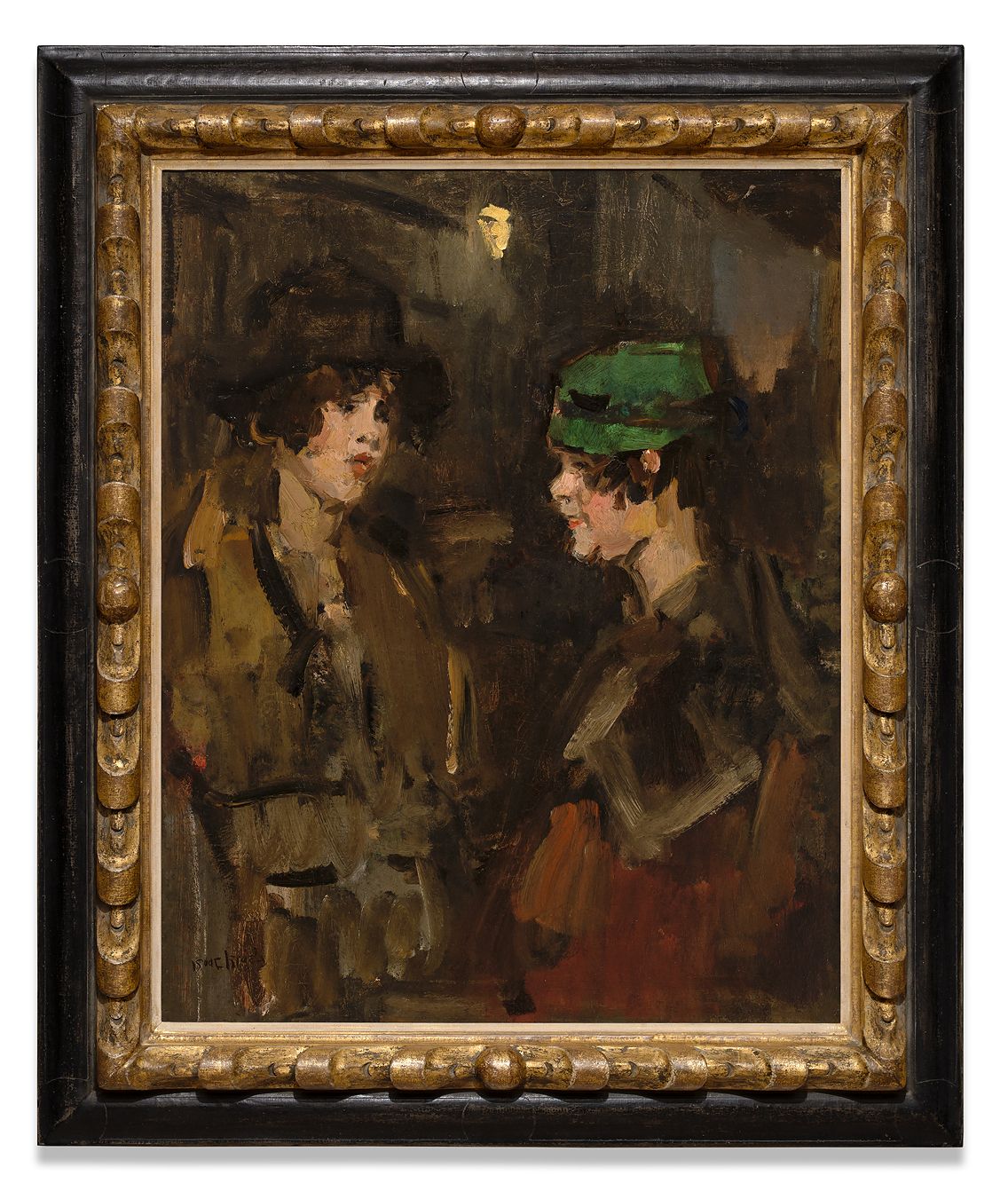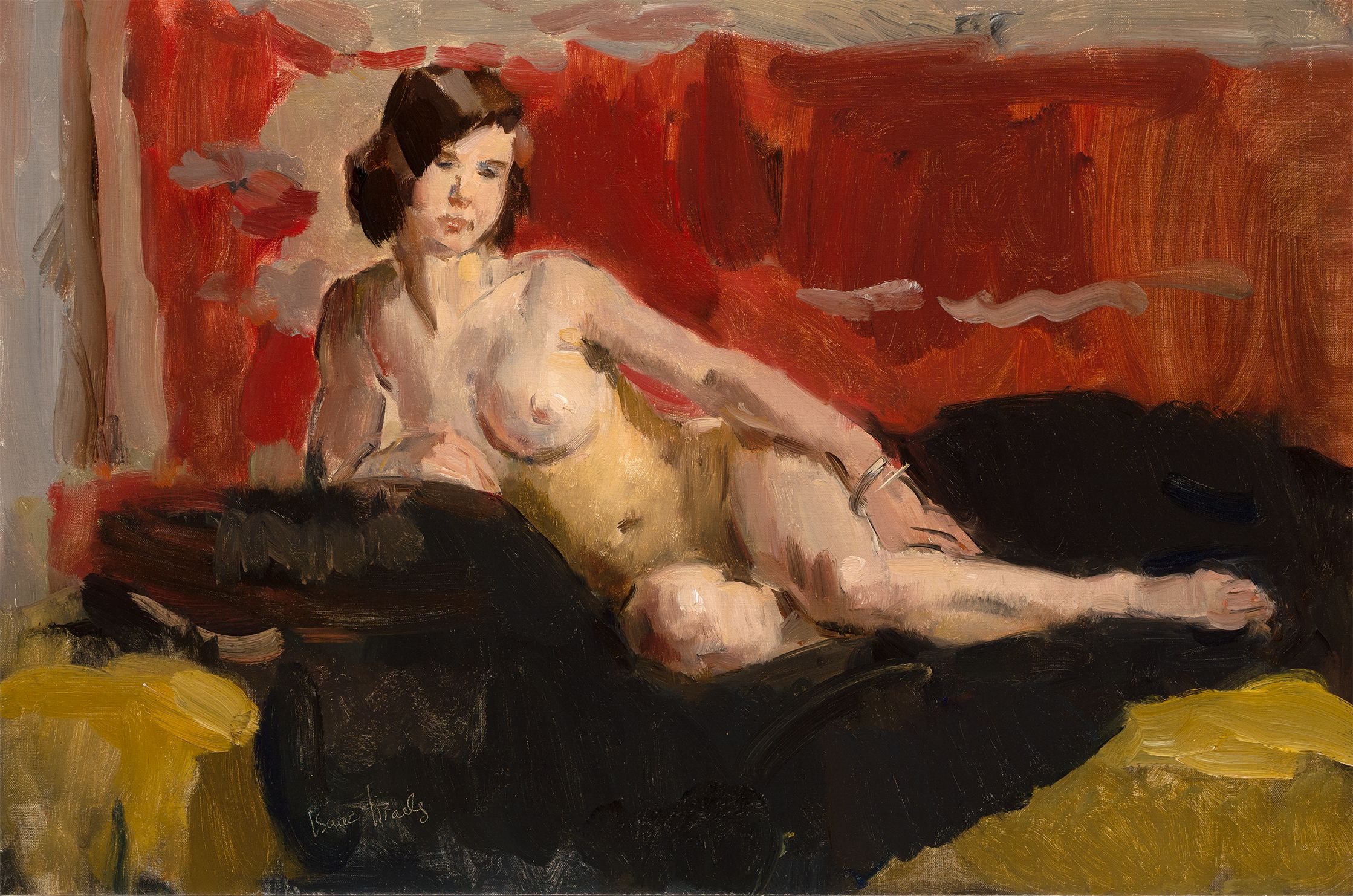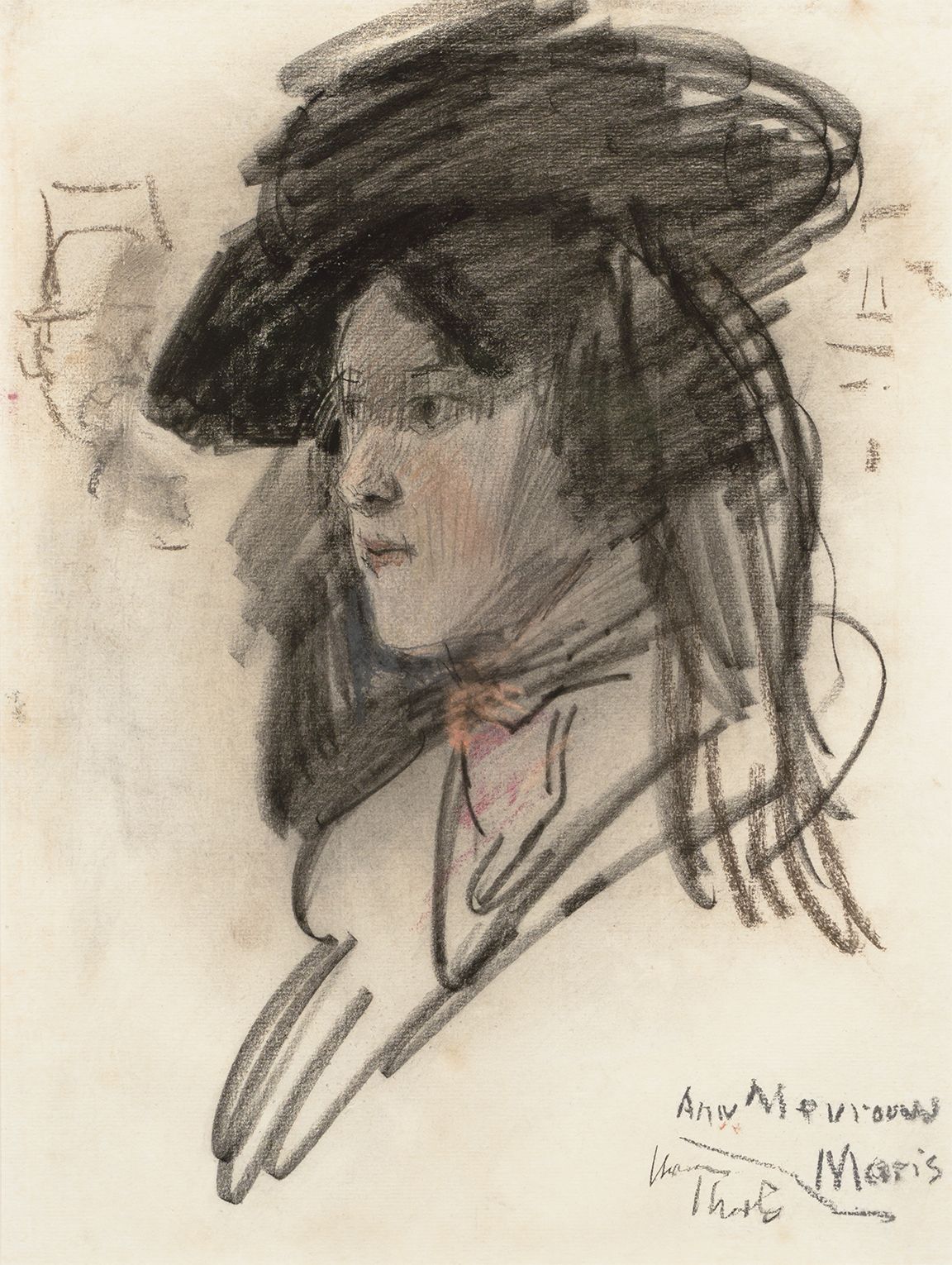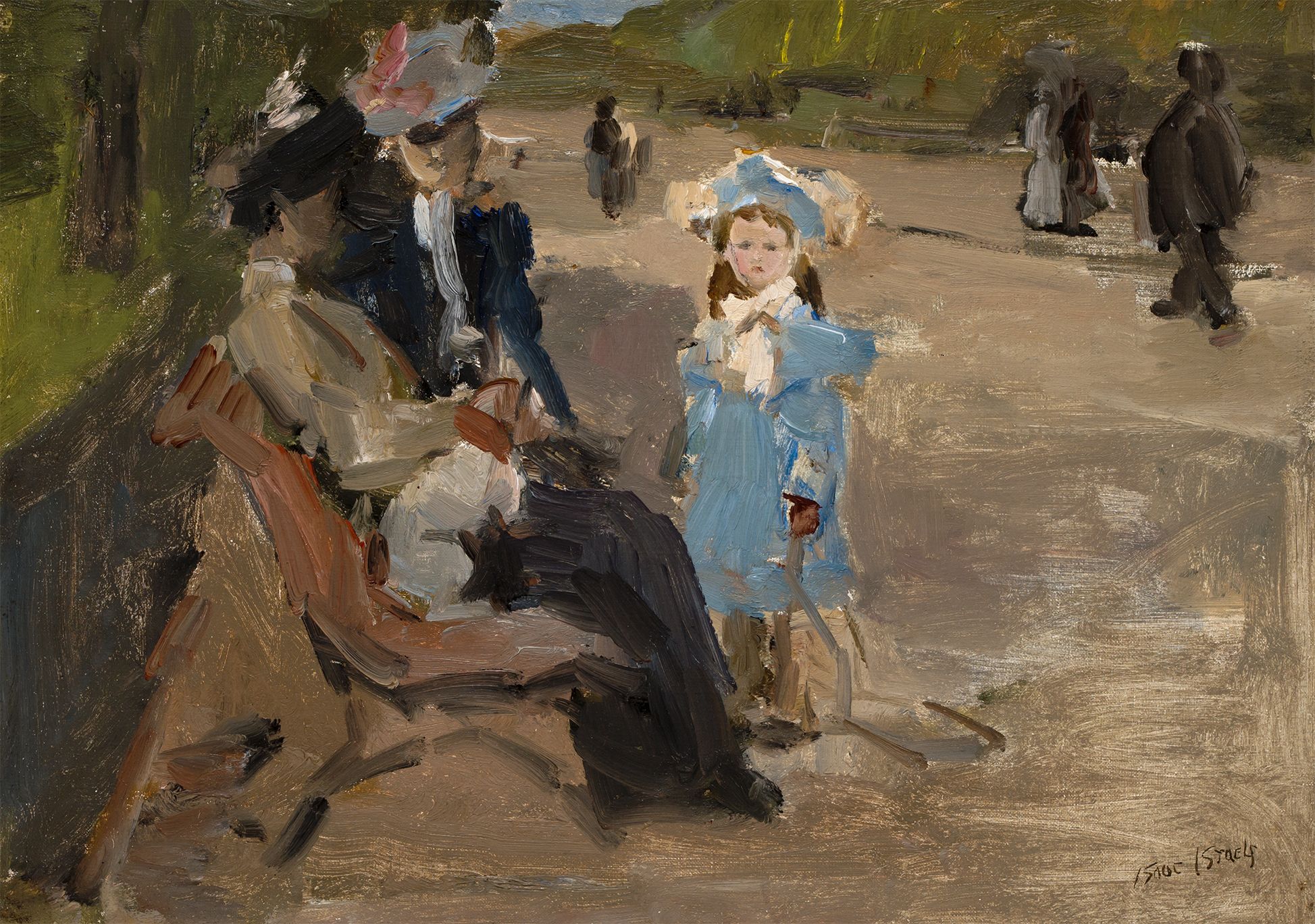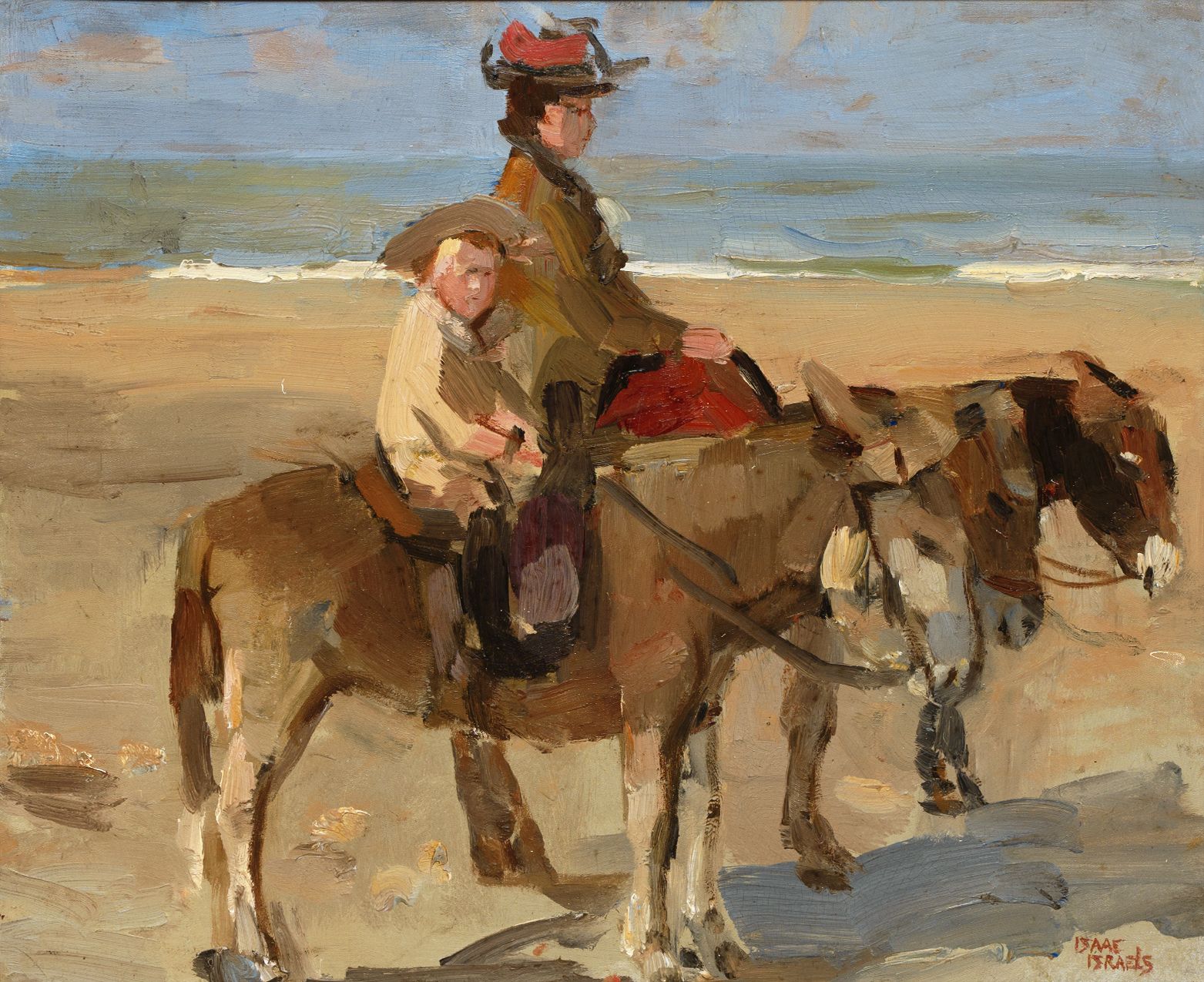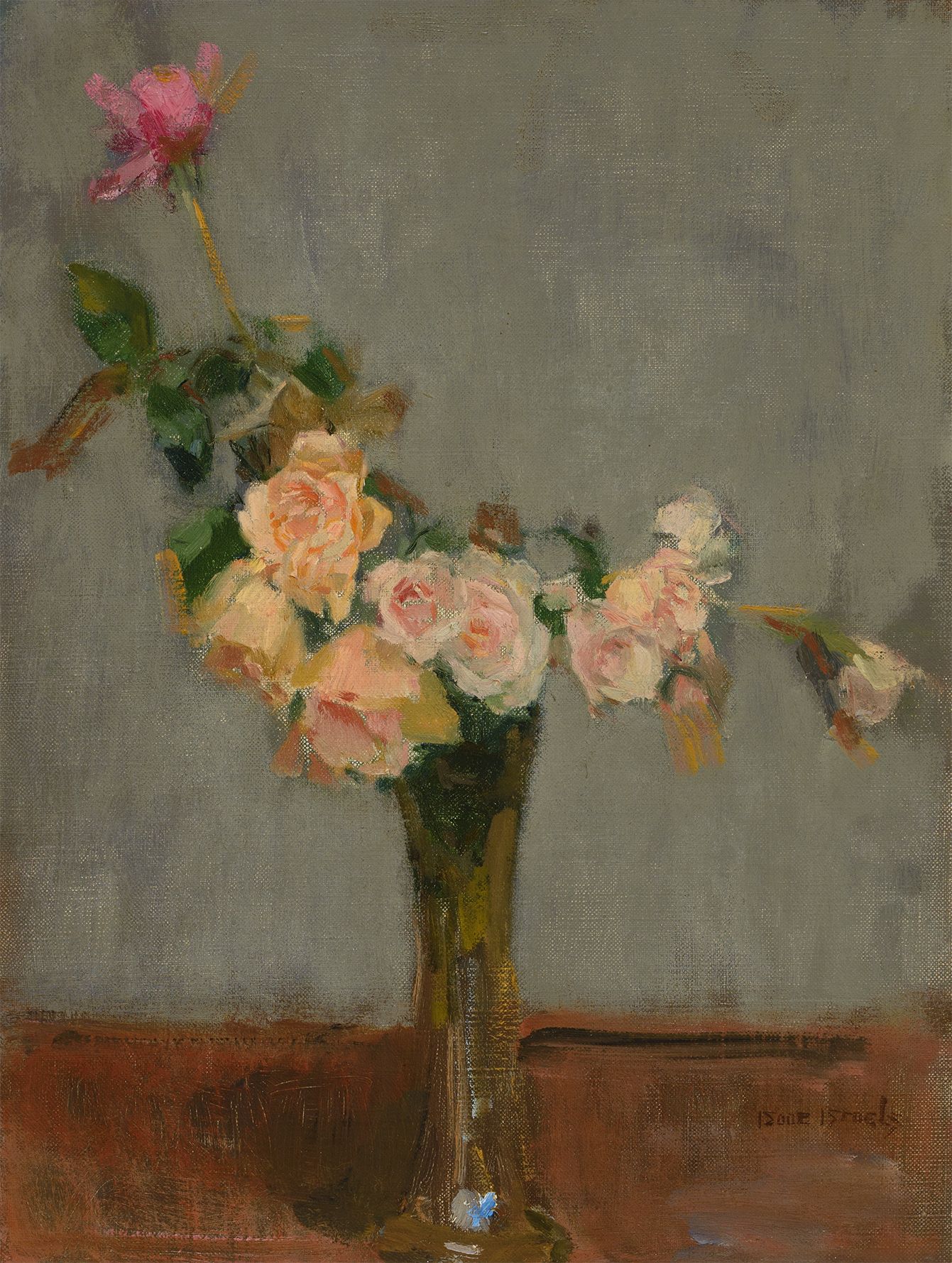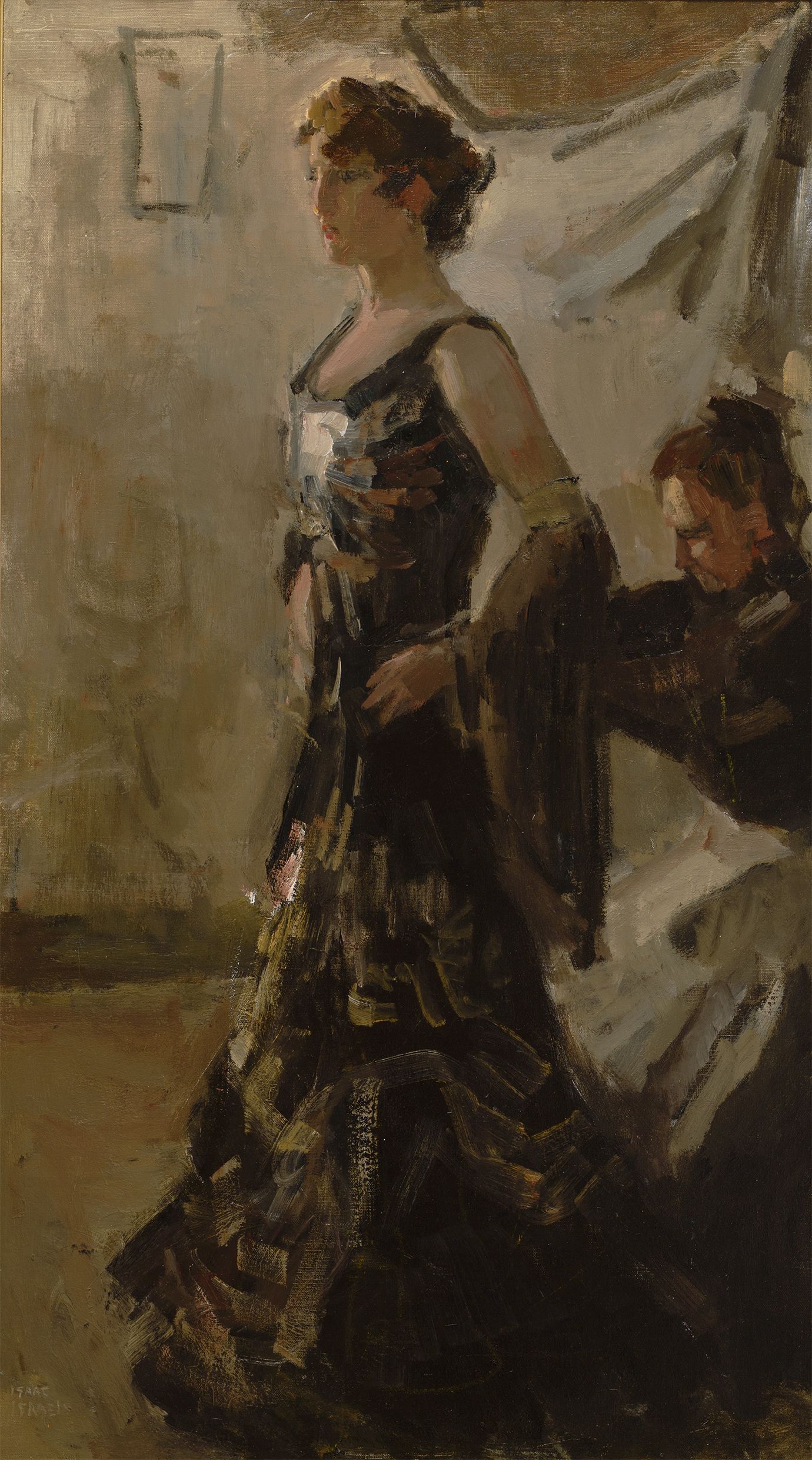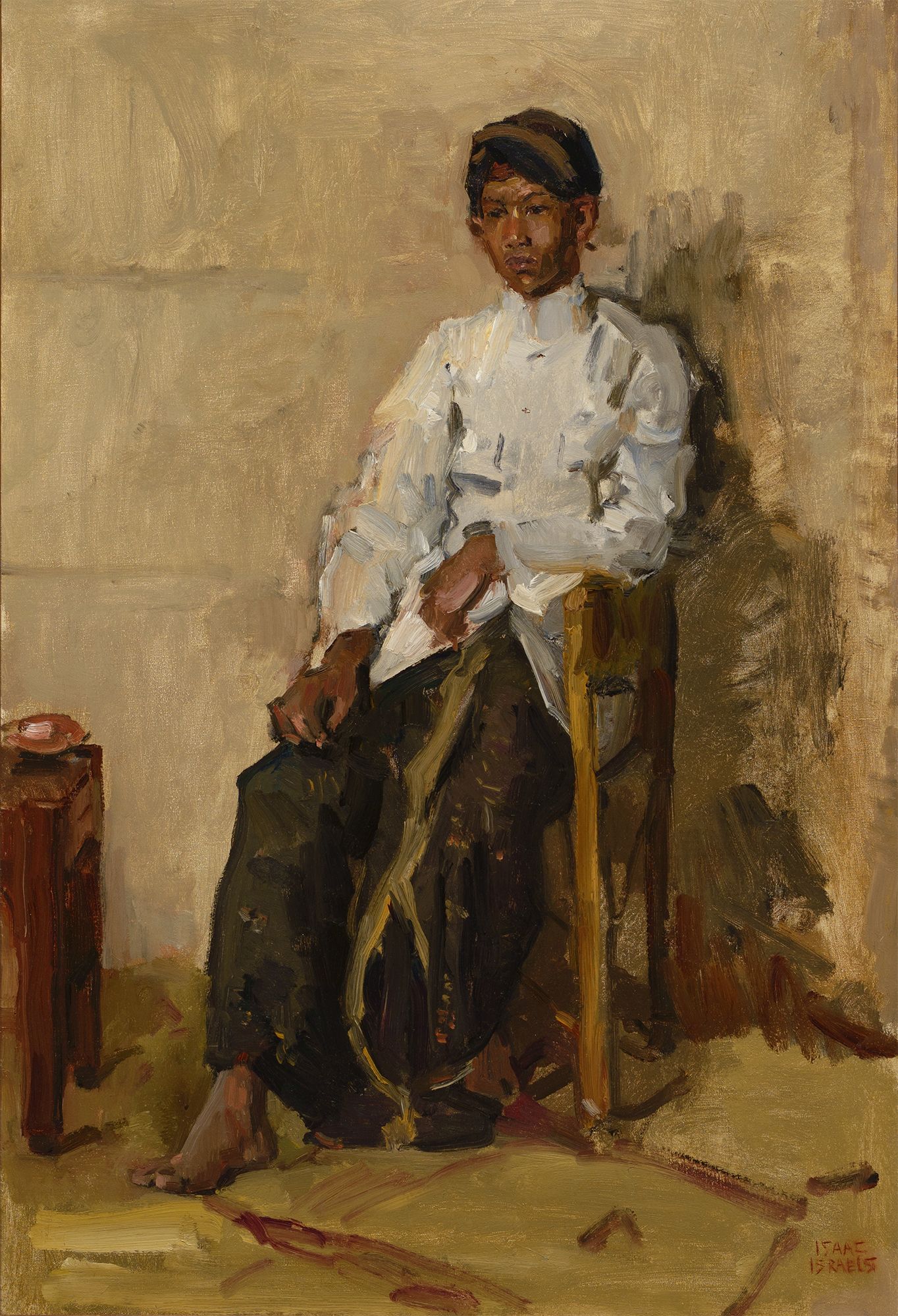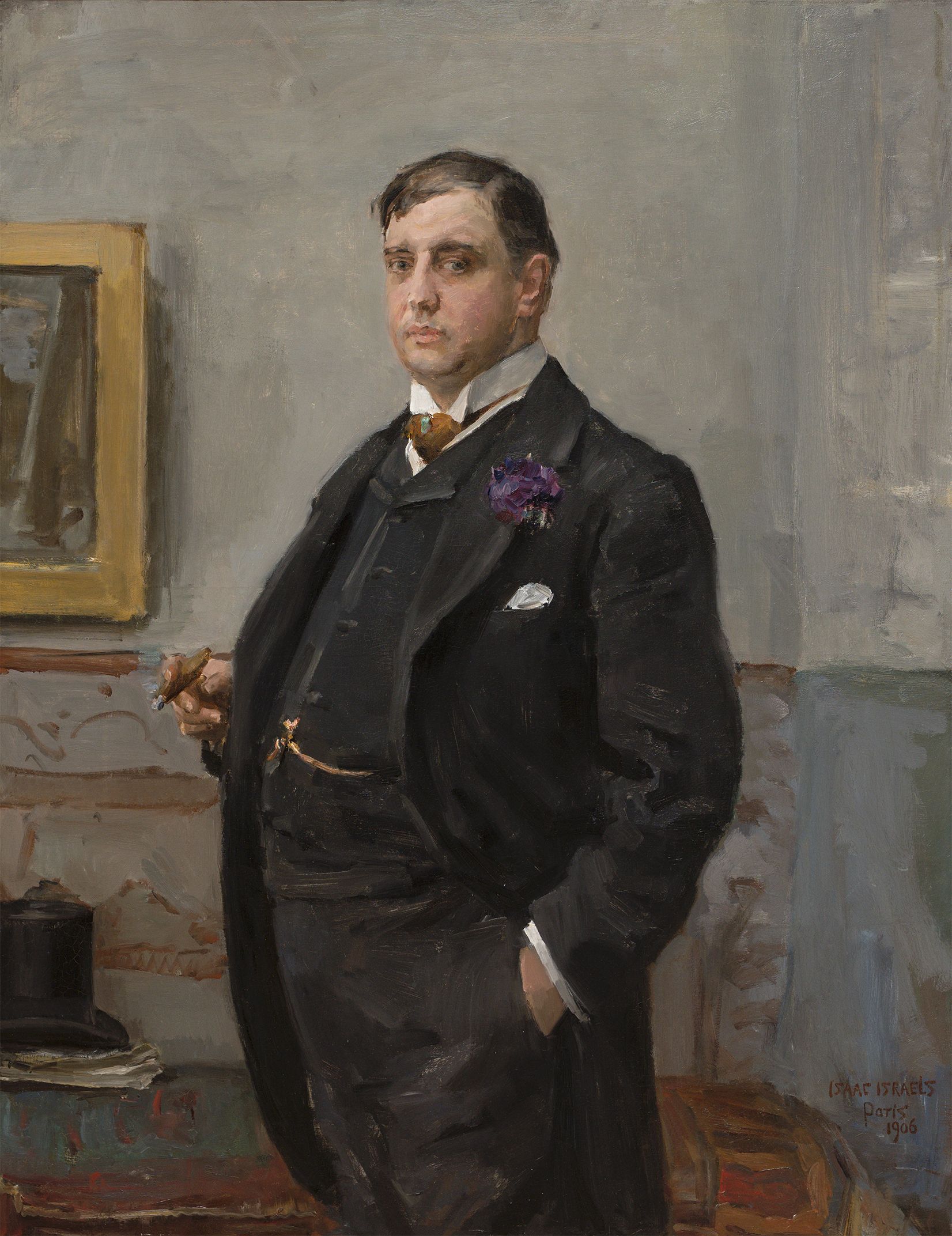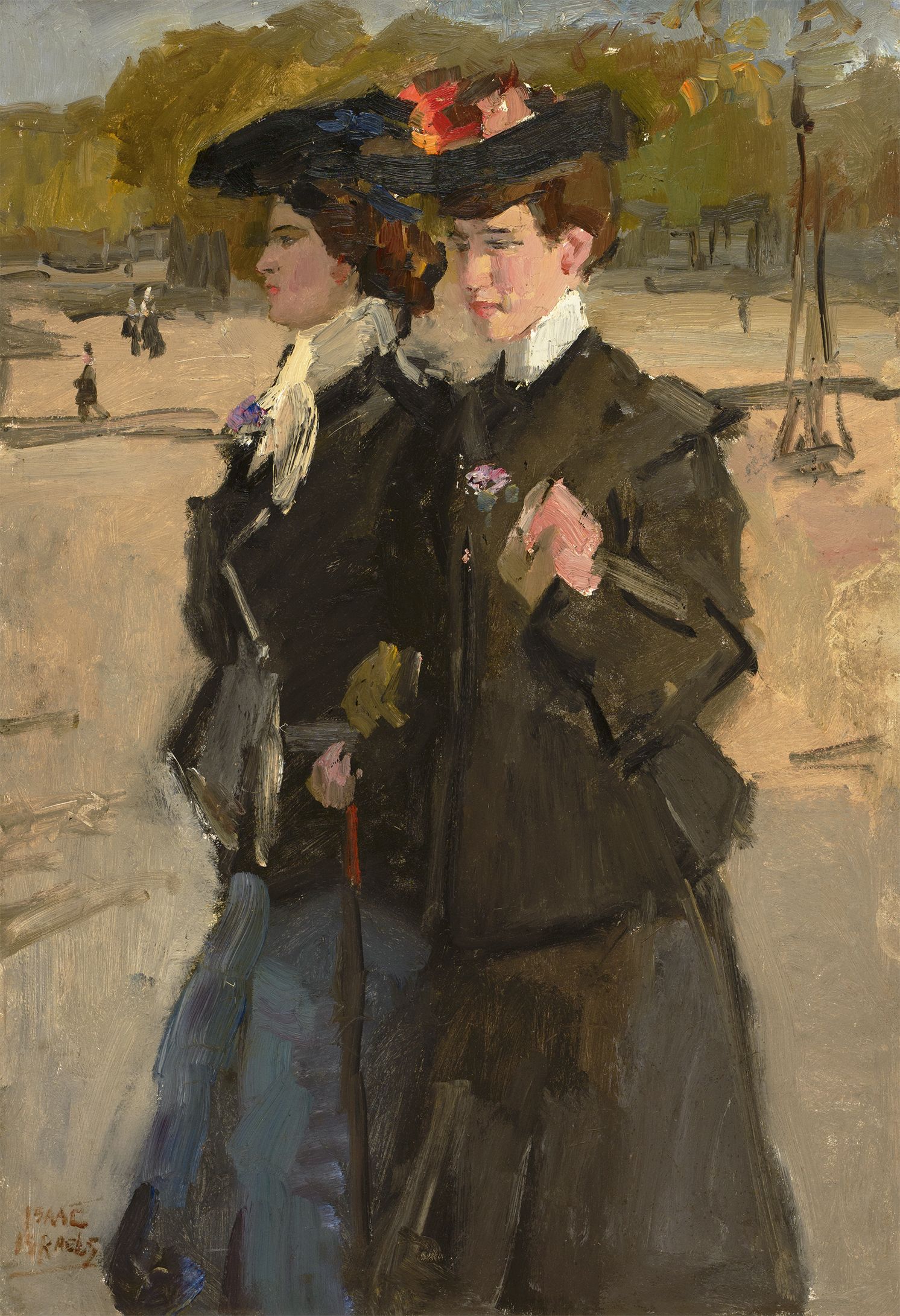I.L. (ISAAC) ISRAELS 1865 Amsterdam - 1934 The Hague Cockney Girls, London
Oil / Canvas: 76,5 x 61 cm
- This artwork can be viewed in our gallery
- Call us for more information: +31 26 361 1876
- World wide shipping available
Details
Isaac Israels was een ware kosmopoliet en vond overal dezelfde onderwerpen die hem interesseerden. Hij had weinig oog voor de eigenheid van een plek, maar zocht naar datgene wat hem interesseerde. Mondaine badgasten in Scheveningen of Viareggio, amazones op het Nederlandse strand of in een Londens park, een vluchtige ontmoeting tussen twee vrouwen in Londen of op een Amsterdamse gracht; het ging Israels om de menselijke interactie. Zelf bleef hij altijd een buitenstaander. Hij voelde zich overal en nergens thuis en zei vaak 'de straat is mijn huiskamer'.
In de lente van 1913 verhuisde Isaac Israels naar Londen waar hij in Fitzroy Street een atelier huurde. In de Britse hoofdstad zocht hij weer zijn vertrouwde onderwerpen. Hij schilderde paardrijdende dames op Rotten Row in Hyde Park, vanouds een mondaine ontmoetingsplaats voor welgestelde Londenaren, die daar te paard flaneerden. In drukke winkelstraten ving hij de dynamiek van de grote stad, zoals hij ook in Parijs en Amsterdam had gedaan. Ook dit schilderij doet sterk denken aan een favoriet onderwerp van Israels uit Parijs: de midinettes, de naaisters van de grote modehuizen, op de Place Vendôme, die hij daar veelvuldig schilderde. Toen hij na het uitbreken van de oorlog niet meer op straat mocht schilderen was de aantrekkingskracht van Londen grotendeels weg en keerde hij via Zwitserland in 1915 naar Nederland terug.
Cockney Girls, London is een goed voorbeeld van Israels rijpe stijl, die hij in Amsterdam ontwikkeld had en in Parijs tot een hoogtepunt bracht. In virtuoze, brede verfstreken wist hij snel en trefzeker een typering te vangen van jonge dames die elkaar ontmoeten op straat. Blik en houding van de vrouwen zijn precies zo getroffen om ons een indruk te geven van hun karakter en onderlinge verhouding. Israels was de schilder van het stadsleven. In Amsterdam al schilderde hij voor het eerst schijnbaar toevallige ontmoetingen op straat, het liefst tussen vrouwen. Het lijken vluchtig geziene momentopnamen, maar Israels liet zijn modellen er wel altijd voor poseren. Hij werkte niet lang aan dergelijke schilderijen, omdat dat ten koste zou gaan van de spontaniteit. Om die reden was het werken op straat voor hem ook zo belangrijk. Vanaf 1894, toen hij van de burgemeester in Amsterdam toestemming kreeg om op straat te gaan schilderen, vormen raak getypeerde mensen op straat een constant terugkerend motief in zijn werk. De schoonheid zoeken in de dagelijkse werkelijkheid werd zijn missie en hij werd er een meester in om met enkele brede verfstreken de essentie van een persoon te treffen. Het schilderen op straat dwong Israels met een minimum aan middelen een maximale expressie te bereiken. Ook in zijn eigen tijd werd dit al gewaardeerd. In een recensie uit 1915 schreef een kunstcriticus: “Welnu, deze schilder houdt juist daar op, waar hij het kernachtigste gezegd heeft, wat hij op zijn gemoed had; de rest die hij er kon bijdoen, zou slechts commentaar zijn. Er is geen eerlijker werker dan hij.”
Width: 61 cm
Collection G. Scherpel, Bussum.
Kunsthandel Gebr. Douwes, Amsterdam, as "Two sisters in conversation".
Private Collection Belgium.
Over I.L. (ISAAC) ISRAELS
Isaac Israels was the only son of the painter Jozef Israels. The family moved from Amsterdam to The Hague in 1871. Isaac also received his training at the academy at the same time as George Breitner, Floris Verster and Marius Bauer, among others. He was a promising artist from an early age and won awards for his paintings. In the '80s, Isaac specialized in military subjects, an interest he shared with Breitner and Verster. Despite this promising start, he felt his education was not yet complete and went to Amsterdam, where he was accepted into the circle of the Tachtigers. Turbulent city life became the common thread through his work. Between 1887 and 1894, things were quiet around him: few paintings are known from this period. Starting in the mid-1890s, Israels went back to The Hague in the summers where he and his father would paint at the beach. They rented a villa in Scheveningen. His paintings of donkey-riding children were crowd pleasers and are still extremely popular. Israels joked that selling a painting was "the Highest of Arts." His donkey-riding children were eagerly purchased at high prices, and can be considered highlights of his oeuvre for just that reason. Isaac Israels was not only the virtuoso painter of modern (city) life, he was also a gifted portraitist. Especially in the last phase of his life, he commissioned portraits of important Dutchmen. Even in this genre, women remained his favorite subject. All his life he preferred to draw and paint maids, Amsterdam street girls, telephone operators, mannequins in department stores and nude models. His portraits of women are also highlights of his oeuvre, such as of the spy Mata Hari, the first female doctor Aletta Jacobs and the actress Fie Carelsen. Isaac Israels was accustomed to giving a quick characterization of his models. A crisp characterization had to appear on the canvas at once. As such, his best paintings are vivid, spontaneous and struck just right. 'I had an attack of patriotism the other day when I looked out my window to my surprise. Surely the Hollandsche is to my mind the most beautiful thing there is,' Isaac Israels on his way to London from Hamburg to the painter Willem Witsen. That did not prevent him from traveling up and down the continent. Israels always loved to travel. Even as a child, he went to Paris with his parents every year. He made trips to Italy, Spain and North Africa, Switzerland, Spain and Scandinavia to draw and paint. In the 1920s, he even spent some time in the Dutch East Indies. Starting in 1903, Israels had his own studio in Paris, where he found his favorite subjects among fashionable Parisians and was able to immerse himself in the modern art on display there. In the spring of 1913, he traded that city for London, where he had his own studio for a time. Despite all the travel and all the impressions, Israels always remained himself. He was a neighbor to Picasso in Paris, went into town with Kees van Dongen, admired the symbolist Odilon Redon and for a time had one of Vincent van Gogh's Sunflowers on his wall. All these modern impressions, however, did not allow him to be diverted from his laboriously developed path. After his Amsterdam years, his palette became lighter and his subjects more mundane, but he stuck to his virtuoso impressionist style until his death. In 1923 he settled permanently on Koninginnegracht in The Hague, where he had left his father's studio vacant until long after his death.
